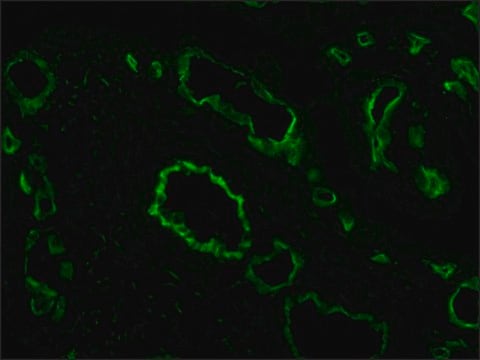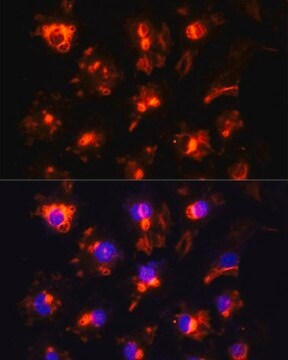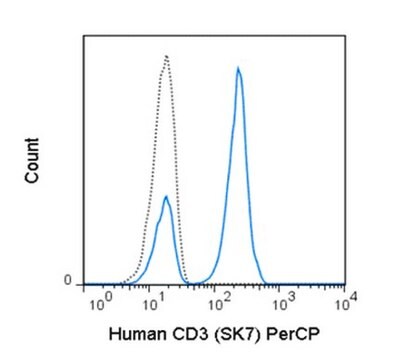F8402
Monoclonal Anti-CD31 (PECAM-1)−FITC antibody produced in mouse
clone WM-59, purified immunoglobulin, buffered aqueous solution
Synonim(y):
Monoclonal Anti-CD31, Anti-PECAM-1
About This Item
Polecane produkty
pochodzenie biologiczne
mouse
białko sprzężone
FITC conjugate
forma przeciwciała
purified immunoglobulin
rodzaj przeciwciała
primary antibodies
klon
WM-59, monoclonal
Formularz
buffered aqueous solution
masa cząsteczkowa
antigen 130-140 kDa
reaktywność gatunkowa
human
warunki przechowywania
protect from light
metody
flow cytometry: 10 μL using 1 × 106 cells
izotyp
IgG1
numer dostępu UniProt
Warunki transportu
wet ice
temp. przechowywania
2-8°C
docelowa modyfikacja potranslacyjna
unmodified
informacje o genach
human ... PECAM1(5175)
Szukasz podobnych produktów? Odwiedź Przewodnik dotyczący porównywania produktów
Opis ogólny
Specyficzność
5th Workshop: code No. P025
Immunogen
Zastosowanie
- immunohistochemii opartej na DAB
- bezpośrednie barwienie immunofluorescencyjne
- sortowanie komórek aktywowane fluorescencją (FACS)
- cytometrii przepływowej
Cytometria przepływowa/sortowanie komórek (1 artykuł)
Działania biochem./fizjol.
Opis wartości docelowych
Postać fizyczna
Uwaga dotycząca przygotowania
Oświadczenie o zrzeczeniu się odpowiedzialności
Nie możesz znaleźć właściwego produktu?
Wypróbuj nasz Narzędzie selektora produktów.
Kod klasy składowania
10 - Combustible liquids
Klasa zagrożenia wodnego (WGK)
nwg
Temperatura zapłonu (°F)
Not applicable
Temperatura zapłonu (°C)
Not applicable
Środki ochrony indywidualnej
Eyeshields, Gloves, multi-purpose combination respirator cartridge (US)
Wybierz jedną z najnowszych wersji:
Masz już ten produkt?
Dokumenty związane z niedawno zakupionymi produktami zostały zamieszczone w Bibliotece dokumentów.
Nasz zespół naukowców ma doświadczenie we wszystkich obszarach badań, w tym w naukach przyrodniczych, materiałoznawstwie, syntezie chemicznej, chromatografii, analityce i wielu innych dziedzinach.
Skontaktuj się z zespołem ds. pomocy technicznej








